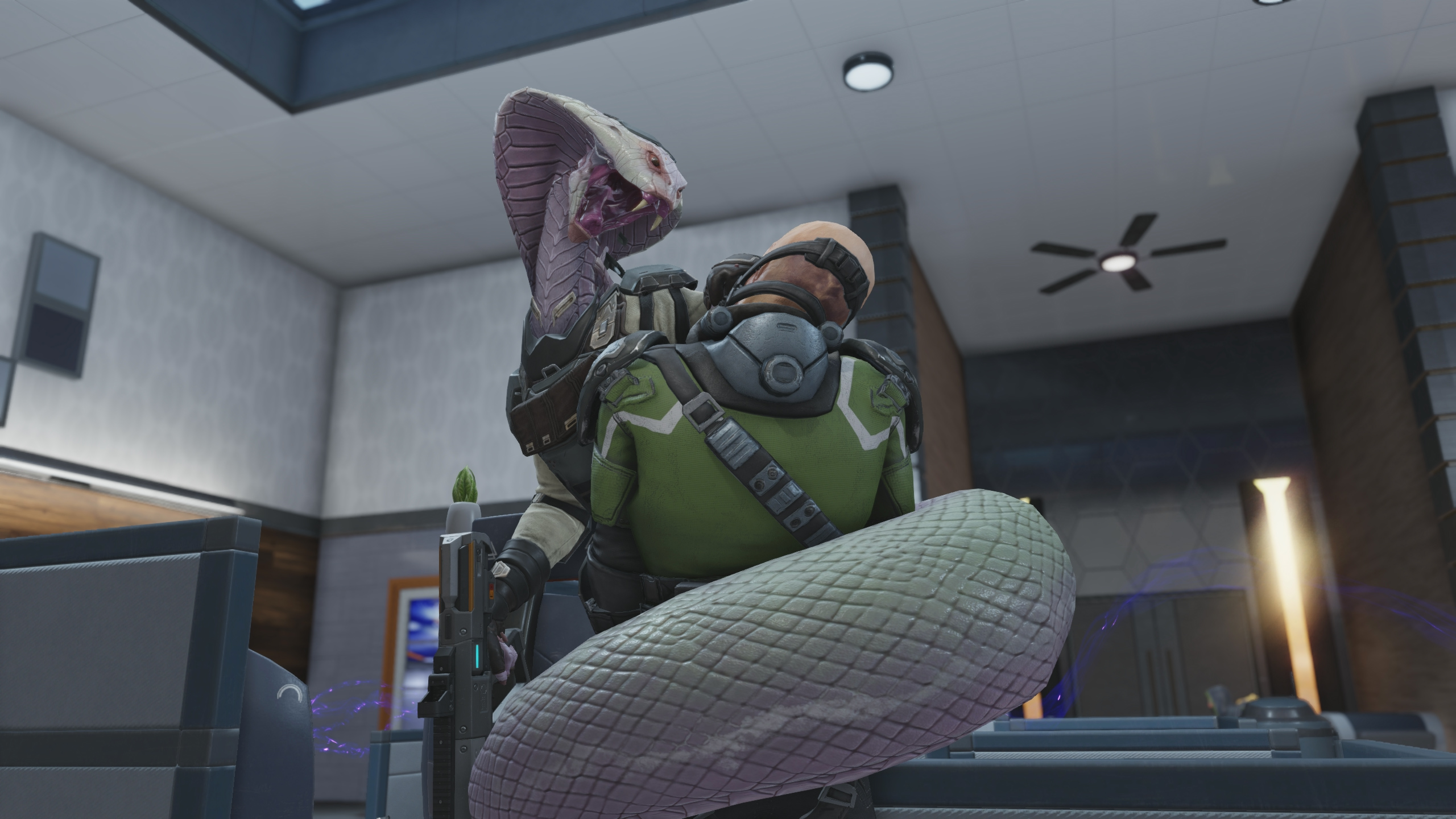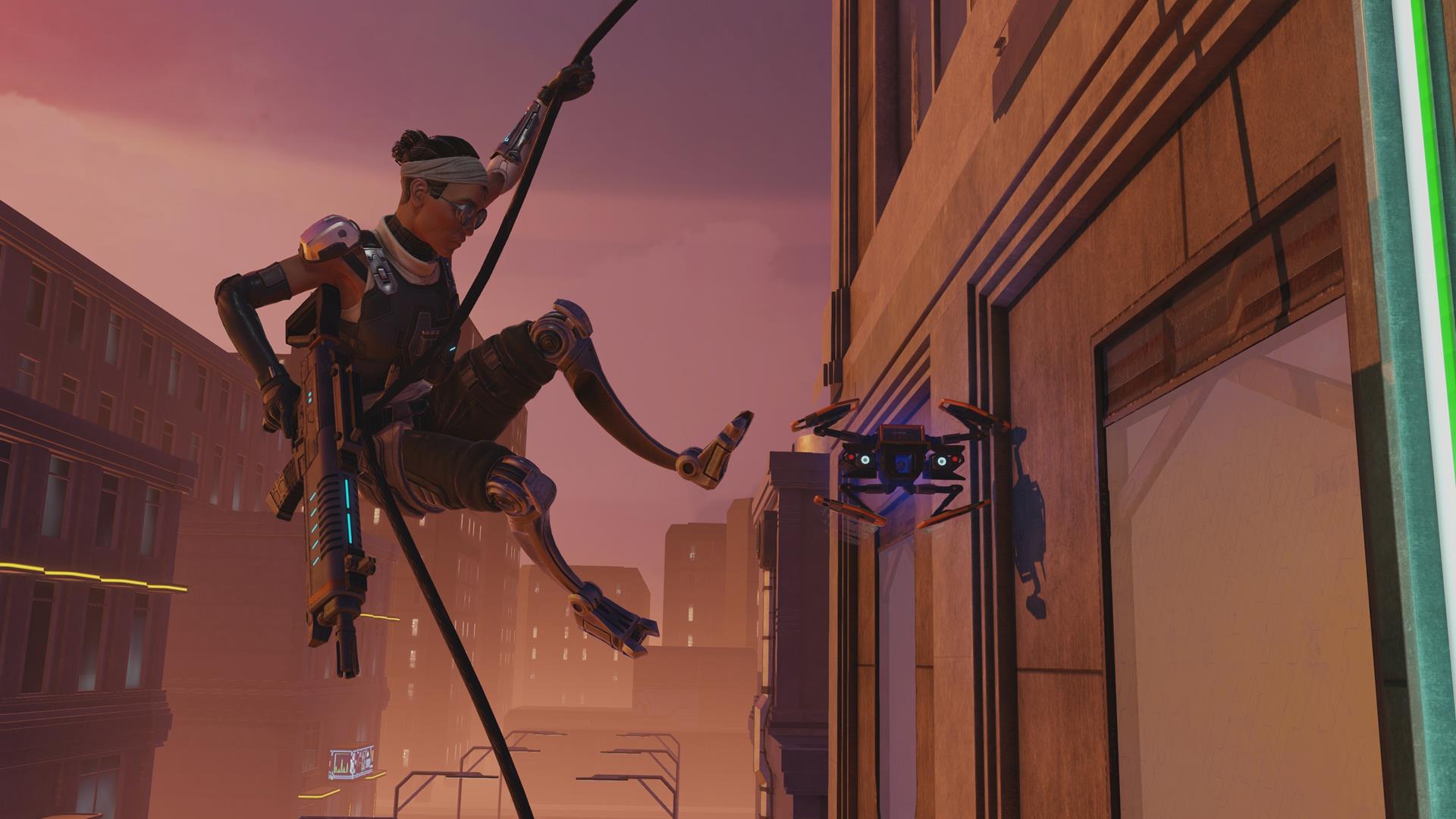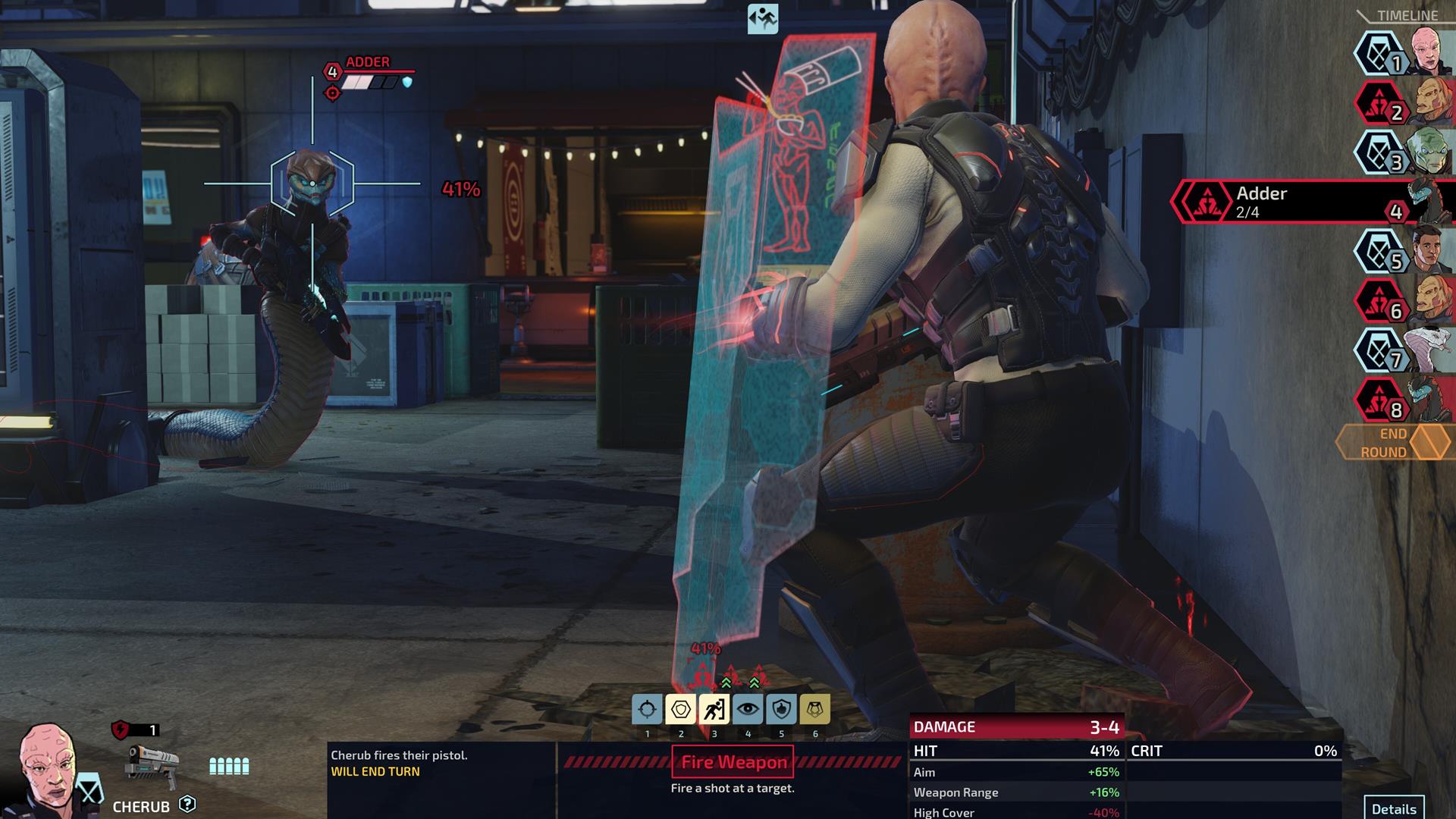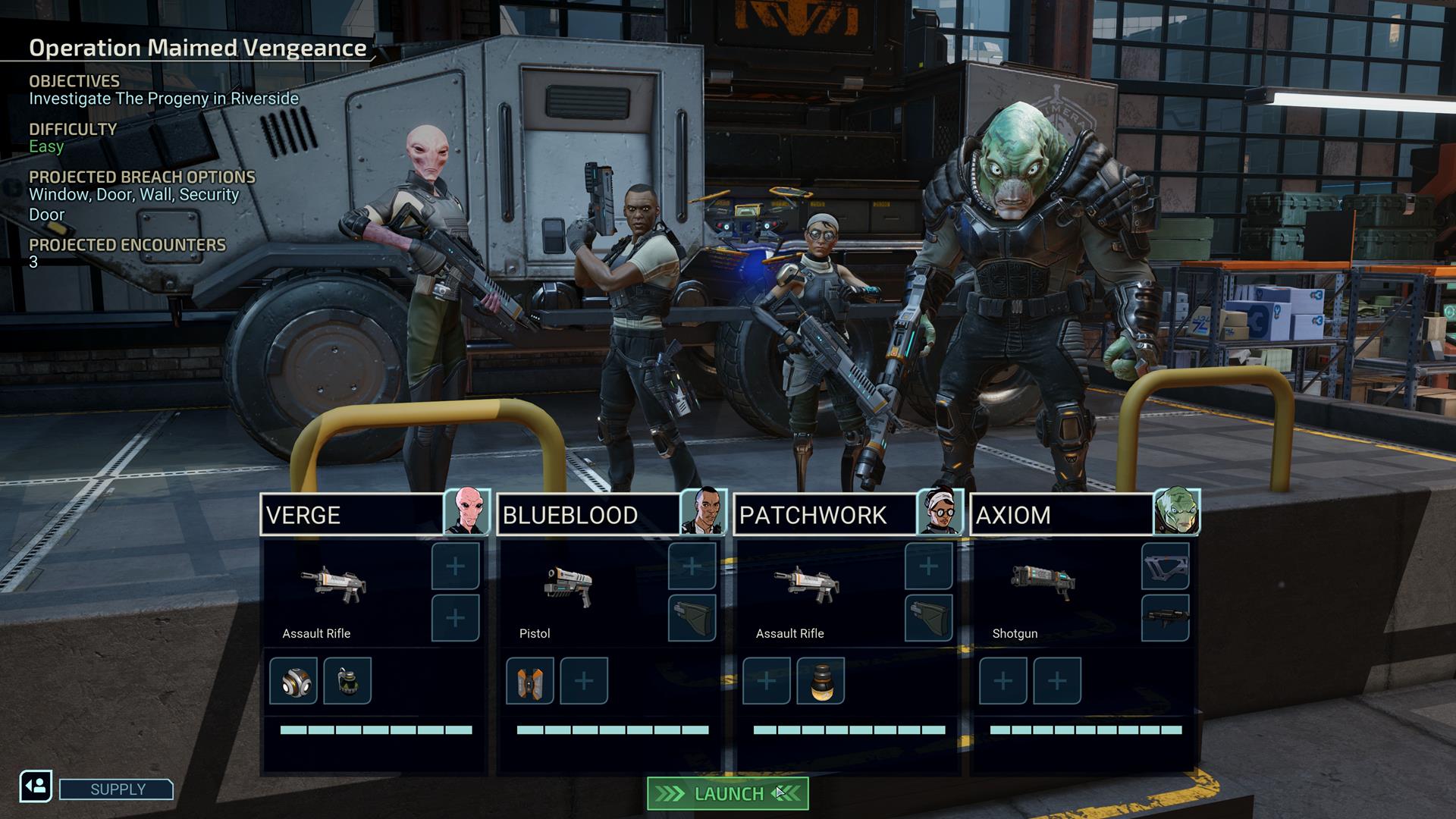XCOM: Chimera Squad review - brilliant strategy gets a budget price point and waves goodbye to permadeath
One of the best things about XCOM is how it makes you feel a kinship with your soldiers. Randomly-generated grunts join your squad, you rename them, you tint their armour, and you send them out on the game’s tactical, turn-based missions like you’re sending your kid to school on their first day. If they survive, they grow in strength. Keep them advancing through the ranks and they might become the backbone of your team. At least until the dreaded day inevitably comes and a gelatinous alien swats them into a wall.
XCOM: Chimera Squad is an attempt to double down on this. Instead of randomly generated soldiers, here you recruit a squad of actual characters, both alien and human, each with their own unique abilities and upgrade paths. They have their own voice lines and personalities, they banter between missions, and you quickly start to earmark your favourites. My top boy is Axiom, a muton with a gigantic head and an even bigger temper. He’s a shotgun-wielding tank who rushes in, soaks up damage, and smashes people up with devastating ground pounds. He also occasionally gets a free hit if he gets mad enough, like a boxer throwing a right hook after the bell - he’s great.
As I always do with XCOM games, I played on Ironman mode. Here the game automatically overwrites a single save slot, and so you have to live with your mistakes. That means those soldier deaths are permanent. But Chimera Squad makes a huge error and misses one of the things that makes XCOM so special - there’s no permadeath. In fact, there’s no death. If one of your squadmates gets downed, you must stabilise them by reaching them or sending your medic’s drone. If they bleed out, they don’t expire - you just have to start the mission again. It feels like the developers at Firaxis were too in love with their characters to let them die. It strips combat of tension.
One of my favourite things about XCOM 2 is how it shows your squad after you evacuate from a mission, all of them sitting in the back of the armoured carrier. The soldiers who died are highlighted by the vehicle’s empty seats as your surviving squadmates sit in silence. It hammers home the costs of your operations. Here there isn’t a cost. You just breeze through.
Instead of deaths, there’s now a new system where your soldiers can develop scars. These battle wounds happen when they’re downed, or occasionally when they drop below half health, and scars lower their stats. However, you can heal scars in the strategy layer between missions by placing soldiers into training, putting them out of action for a handful of missions. It’s basically inconsequential, but clearly exists to force you to stop using Axiom all the time, even though he’s the absolute boy.
A consequence of this change is that Chimera Squad is too easy. If you fail a mission, simply try it again until you win. And since characters can’t die, they only ever grow in strength. By the halfway point, you’ll likely have your favourite squad of four and they’ll all be fully kitted out with unique weapons, all their upgrades, and the best kit. You become too powerful. And the structure of the game only heightens this power imbalance.
Set five years after the Advent and human conflict of XCOM 2, you lead the Chimera Squad, a ragtag SWAT team, as they clean up the streets of City 31. The game kicks off with the murder of a mayor, and you’re tasked with finding out the culprit. To do so, you have to target the operations of three different crime organisations: the Progeny, a group of psionic-powered humans; Gray Phoenix, alien scavengers who harvest dangerous machinery; and Sacred Coil, an underground religious cult of hybrids.
You have to investigate each group one at a time, taking on increasingly difficult missions to bring them down. Replacing your base of operations from the last couple of games, here you have a colour-coded city map. Your goal is to keep civil unrest down by taking on missions in the districts that need it most, and juggling other abilities in the strategy layer to bring down the heat. It’s much simpler and more streamlined than the base management of mainline XCOM games. Either way, the ultimate goal is to keep chipping away at a gang’s operations until you find enough information to attack the main target and bring the organisation down for good. Once you do, it’s on to the next. And this is where the main problem occurs.
Because the missions ramp up in difficulty as you proceed through an investigation, that difficulty progression stops dead when you take down a leader. You’re back to the start again, taking on easy missions until you reach the same point with the next gang. But your soldiers keep all their progression because they can’t die, so you just rinse the early encounters.
That’s not to say it’s bad, though. This is still XCOM - its strategic, turn-based battles are still as enjoyable as ever. If you’re looking for more of that, here’s 19 hours of it for the fraction of the cost of a full game. It might replace cutscenes with comic strips, and it might be more streamlined, but there’s enough that’s new here to make it worth playing as well. Just the fact that your characters all have different abilities makes each encounter feel fresh - at least until you settle into a squad of your favourites. Whether you like to rush in, hang back, or manipulate the battlefield and pin people down, there’s a mix of soldiers for each playstyle, and you regularly get to choose one of three new team members to add to your ranks.
On top of that, you’ve got Breach mode. Since you control a team of SWAT, each mission begins in this phase: stacking up on doors, vents, walls, and grapple points before bursting in to surprise the enemies on the other side. If you manage to do it effectively, you can delete four enemies before you even take your first turn. Some breach points require specific items to use - explosive charges for walls, keycards for side doors, etc - and each provides its own benefits and drawbacks. Some doors are more closely guarded, but they might provide you with better buffs, while a side door might mark your team upon entry but initially be a safer bet. Then you have to prioritise targets as you burst in, taking down the aggressive enemies first so they can’t fire on you immediately after your breach actions are taken.
I have to also give a shout out to the improved physics - every enemy dies in a satisfying way, flopping out of windows, folding over, or flipping over railings. It’s a little touch, but it makes executing a perfect plan feel that much sweeter.
Elsewhere, the only other change is that Overwatch - an ability that lets you lock down an area, taking a free shot on any enemy who moves into range - now functions differently. Instead of locking down a set area around your character, now you have to allocate an area with a vision cone, so you have a more limited kill field. I quite like this change because it means you have to be more thoughtful about when and where you use Overwatch, which felt a little overpowered in previous games. Here I found myself using it much less.
Chimera Squad is an XCOM game with its own identity. But in carving that identity, in adding characters, it loses some of its own character. It hopes to create a more engaging story, but the story it creates is nowhere near as memorable as the ones we create for ourselves when everything turns to s**t. Still, XCOM: Chimera Squad is perhaps the best value proposition I’ve seen in video games for a long time. It’s well worth the modest price, it’ll last you a long weekend, and it still delivers some of the best turn-based strategy around. I just wish it had been brave enough to let us live with our mistakes.
Version tested: PC, code supplied by publisher.






